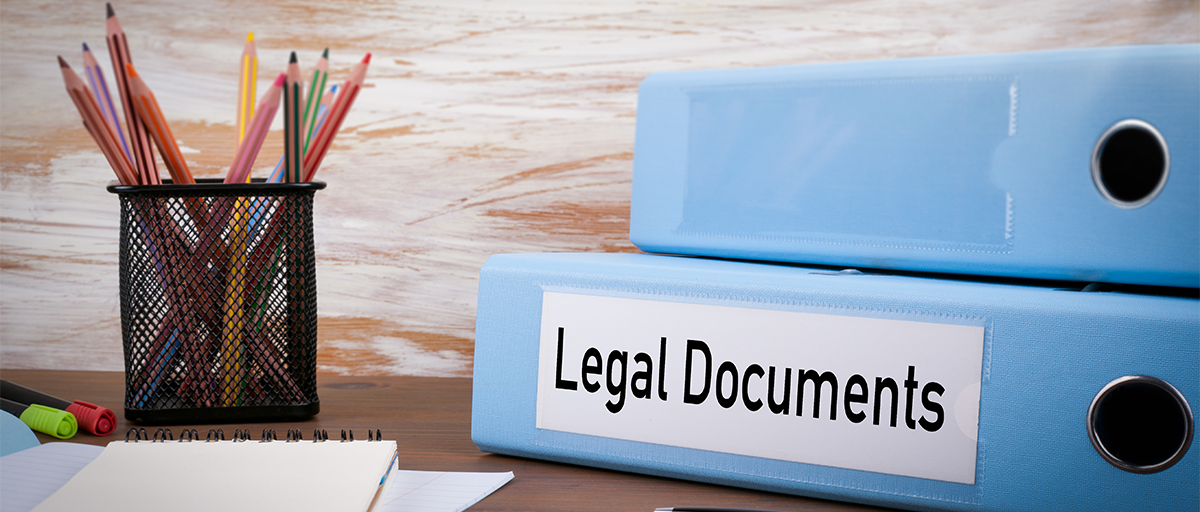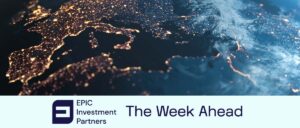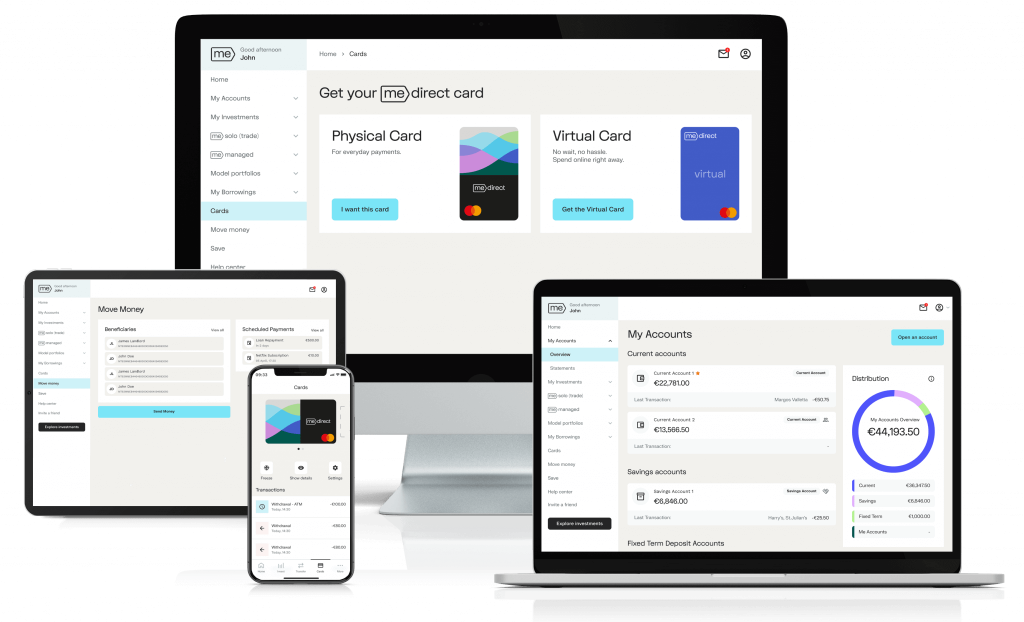 |
An article written by Ray Calleja: Head – Private Clients, MeDirect |
Before investing in any mutual fund, you need to consider what are the fund’s investment objectives, the risks involved, the fees and expenses that you need to pay.
MeDirect offers a wide selection of over 500 mutual funds through its online trading platform. You can access a wide range of information by clicking on the fund name, including all the Legal Documents of the fund. You have access to the most recent prospectus for any given fund as well as its most recent annual and semi-annual reports plus the Key Investor Information Document (KIID). MeDirect also makes the Morningstar report available for your perusal.
In this article we will go over the important documents that are associated with mutual funds. Unfortunately, for the common investor, these documents are packed with legal jargon and very detailed information to fulfil the disclosure requirements with the Regulators and protect the funds from legal liability. Nevertheless, these documents are important for mutual fund investors.
UCITS regulatory framework
The Undertakings for the Collective Investment in Transferable Securities (UCITS) is a regulatory framework of the European Commission that creates a harmonised regime throughout Europe for the management and sale of mutual funds. UCITS funds can be registered in Europe and sold to investors worldwide using unified regulatory and investor protection requirements. UCITS fund providers who meet the standards are exempt from having to apply for national regulation in individual European countries.
The Key Investor Information Document (KIID)
The KIID is a two-page document introduced by Directive 2009/65/EC (UCITS IV) aiming to simplify and standardise the basic information provided by the UCITS to investors. Its form is standardised in terms of both the size as well as the content. The accuracy and standardisation of the provided information helps investors identify differences between UCITS and compare them. A UCITS must update its KIID on an annual basis for each sub-fund / standalone fund within 35 business days of the end of each calendar year.
The document describes the key information for a Fund, such as the nature of the Fund, its charges, and the risks associated with investing in it. Information contained in the KIIDs is required by law and enables easy fund comparison across different asset management companies. Each share class of every mutual fund OEIC (open-ended investment company) will have a KIID.
The Prospectus
While the KIID may be considered as the equivalent to the Summary Prospectus in the United States, here we will examine the contents of the full Prospectus. This is known as the statutory prospectus, i.e. the traditional, long-form prospectus with which most of us are familiar with.
Regulators stipulate that mutual funds must include important information in the prospectus, including:
1. Investment Objective or goals. Is the fund seeking to make money over a long-term period of time through capital growth? Or is it trying to provide its shareholders with regular income? If you’re investing at a relatively younger age you will probably go for the former. But if you are looking for regular income you will go for the latter.
2. Strategy for reaching those goals. The prospectus also describes the types of stocks, bonds, or other securities, which the fund will invest in. Equity funds state what kinds of companies they look for, such as small, medium or large. Bond funds specify what sort of bonds they generally hold, such as Treasury, investment grade or high yield bonds etc. For example, the fund may choose to focus on one or more industries, geographic regions, or types of securities. Most restrictions placed on the fund are also mentioned in the prospectus, including references to short or long selling, leveraged purchases, and so on.
3. Principal Risks of investing in the fund. Every investment has risks associated with it, which may lead to financial loss, and a prospectus must state and explain these risks. The fund must satisfy your investment objective and match your risk tolerance, which depends on several factors, including your financial situation, age and family commitments. The types of risks to which a fund is subject vary considerably with the nature of its investments. Some of the more common risks for funds include Market risk (such as a decline in markets where it invests); Business risk (the fund may invest in a company that goes out of business); Credit risk (the fund may invest in bonds issued by a company which may be unable to meet its interest or capital payments); Interest Rate risk (the value of bonds which the fund invests in may fall due to rising interest rates); Inflation risk (the value of bonds which the funds invests in may also fall as a result of price increases due to inflation) and Concentration risk (the fund may invest in one particular industry, sector or geographical area thus exposing itself to a greater risk if that sector or area suffers an economic downturn).
4. The Fund’s fees and expenses. Each mutual fund has different fees for the investor to pay. A table in every prospectus makes it easy to compare the cost of one fund with another. You will be told, in percentage terms, the amount deducted from the fund’s return each year to pay for things such as management and distribution fees.
5. Its Past Performance. We keep hearing the disclaimer that “Past performance is no guarantee of future returns.” However, a fund’s record can still give you an idea of how consistent its performance has been. The prospectus will include: (a) a bar chart displaying the fund’s investment performance for the previous ten years (or since the fund’s creation if the fund has less than ten years of performance history), which gives a clear picture of the fund’s ups and downs over time; (b) a table comparing the fund’s performance over the previous ten years relative to a broad-based securities market index or other benchmarks to provide return information; and (c) the fund’s performance for its best and worst calendar quarters.
6. Management. The management of the fund is an important element in determining its investment success. The prospectus will describe: (a) the investment adviser (and any sub-advisers the investment adviser may employ) and (b) the individual portfolio manager(s) employed by the investment adviser. Consider the fund manager’s tenure if it is relatively short, the fund’s past record may have been achieved under someone else. Find out whether the fund manager has run other funds in the past. A glance at those funds could give you some clues about the manager’s investment style and capabilities.
Shareholder Information
The prospectus will contain other useful information for shareholders, including information about:
- buying and selling fund shares. Typically, funds will permit investors to buy and sell shares either directly or by contacting a broker, such as MeDirect. Purchases and redemptions are made at the net asset value next calculated by the fund, which is calculated after receiving your order. As explained in previous articles the fund’s net asset value per share is the market value of the fund’s assets, minus fund expenses and any other liabilities, divided by the number of fund shares outstanding. Funds are required to pay redemptions within seven calendar days, but some funds pay redemptions within one or two business days.
- distributing dividends. Typically, funds will offer different options for payments of dividends from the fund’s portfolio holdings. For example, many funds will allow investors to withdraw their dividends (e.g. at MeDirect we pay dividends into a client’s investment cash account for funds held with us under nominee) or to automatically reinvest the dividends in the fund.
- exchanging shares between funds. Many funds are offered within a family of funds and you may be able to exchange your shares in a fund with shares of another fund in the same fund family. An exchange is usually subject to a fee, and may require you to pay taxes.
Shareholder Reports
Mutual funds must provide reports to their shareholders on a semi-annual basis. The semi-annual report covers the first six months of the fund’s fiscal year, while the annual report covers the fund’s entire fiscal year. Some fund houses publish these reports quarterly. Mutual funds that are registered with the Securities and Exchange Commission (SEC) in the US or The European Securities and Markets Authority (ESMA) prepare their own shareholder reports and file them with the respective regulators. So long as these funds disclose the information that the latter require in the shareholder report, they can decide how to organize and present the information within the report.
Recent Fund Performance
You will find the fund management’s discussion near the front of the annual report. Here the fund manager discusses the fund’s individual stocks and/or bonds that the fund owns and the industries in which the fund is invested. There will be a discussion on the performance during the fiscal year in light of market conditions and other factors that may have influenced the fund’s investment return for the year. The fund manager will usually point out which holdings of the fund contributed significantly to the fund’s performance and which holdings detracted significantly from that performance. Finally, most managers will give you an indication of what you can expect from the fund in the future, given an unchanged strategy.
In addition, a line graph comparing the performance during the last 10 years (or for the life of the fund, if shorter) of a hypothetical $10,000 initial investment against an index is provided. A quick glance at the graph will tell you whether the fund’s performance has been steady or volatile over the 10-year period (or over the life of the fund, if shorter). For example, if the slope of the line is gradual, with occasional ups and downs, it suggests that fund performance has been relatively stable. If, on the other hand, the slope of the line is choppy, with numerous peaks and troughs, it suggests that the fund has been volatile. Compare the slope of that line with the line representing the index to which the fund is being compared.
Underneath the line graph will be a table showing the fund’s annualized (or average annual) returns for 1-, 5-, and 10-year (or for the life of the fund, if shorter) periods. You must pay attention to the fund’s 5- and 10-year returns. If the fund’s returns were high in the past year but unimpressive in the past five or 10 years (or over the life of the fund, if shorter), it is possible that the past year’s outperformance may not last. On the other hand, if the fund experienced consistently steady returns in the past five or 10 years, but suffered a sharp loss in the past year, it may be unclear as to whether the recent loss signals the beginning of a trend or is an isolated occurrence.
Portfolio Holdings
Funds often list the portfolio’s largest holdings and provide some information about what these companies do or why the manager owns them. Some reports will also indicate, through a chart or table, the sectors where the fund has considerably and relatively high exposure.
This general overview is complemented by a complete list of the fund’s portfolio holdings including stocks, bonds, and cash as at the end of the reporting period of the report. These holdings are usually segmented by industry and also by country, where relevant. Such a listing is useful since you will be able to tell whether the fund is holding many names in one industry or making a few large selected choices.
Footnotes
In the footnotes, you can find out if fund managers are practicing such strategies as shorting stocks or hedging exposure to foreign currency, which can significantly affect the fund’s performance. Footnotes can also provide insights into particular portfolio holdings. For instance, they may designate certain holdings as illiquid securities.
Financial Statements
A fund’s annual report concludes with its financial statements. There will be a lot of data here and this is the main source for third party reports.
Investors would want to check the breakdown of the fund’s expenses, including management fees. Related to expenses is the fund’s turnover ratio – how often shares are traded. If there’s a big change in any of these numbers over time, or they appear larger than those of the fund’s peers, inquire as to why. In addition, you can find out how much in unrealized or undistributed capital gains you’re facing, using the Statement of Assets and Liabilities. A gain is unrealised when a stock has gone up but the fund hasn’t sold it. As soon as the fund sells the stock, it becomes a “realized” gain, which has to be distributed to shareholders, which we discussed in a previous article.
Conclusion
While a few individual investors like to evaluate all or most of these legal documents, which can also be obtained directly from the respective fund house via its website or by a simple request by email, MeDirect also provides its customers with the Morningstar reports, which should be given extra weight since they provide a thorough analysis from a highly world-renowned third-party independent source. These reports are available in the information section in the Legal Documents part, along with the KIID, Prospectus and Annual/Semi-Annual Report on MeDirect’s public and private website. These reports from Morningstar do a good job of clarifying long lists of data and putting it into context, in a very easy to understand manner.
The importance of comparing a mutual fund with others that have similar investment approaches cannot be overstated. You should evaluate how its costs compare, if its performance is competitive, and if it provides sufficient compensation for the risks it is taking on.
The above is for informative purposes only and should not be construed as an offer to sell or solicitation of an offer to subscribe for or purchase any investment. The information provided is subject to change without notice and does not constitute investment advice. MeDirect Bank (Malta) plc has based this document on information obtained from sources it believes to be reliable but which have not been independently verified and therefore does not provide any guarantees, representations or warranties.
MeDirect Bank (Malta) plc, company registration number C34125, is licensed by the Malta Financial Services Authority under the Banking Act (Cap. 371) and the Investment Services Act (Cap. 370).
The financial instruments discussed may not be suitable for all investors and investors must make their own informed decisions and seek their own advice regarding the appropriateness of investing in financial instruments or implementing strategies discussed herein.
If you invest in any of the products discussed you may lose some or all of the money you invest. The value of your investment may go down as well as up. A commission or sales fee may be charged at the time of the initial purchase for an investment and may be deducted from the invested amount therefore lowering the size of your investment. Any income you get from this investment may go down as well as up. This product may be affected by changes in currency exchange rate movements thereby affecting your investment return therefrom. The performance figures quoted refer to the past and past performance is not a guarantee of future performance or a reliable guide to future performance. Any decision to invest in a mutual fund should always be based upon the details contained in the Prospectus and Key Investor Information Document (KIID), which may be obtained from MeDirect Bank (Malta) plc.





